
The world of coffee is constantly buzzing, and for years, single-serve coffee pods have been at the heart of that buzz, promising ultimate convenience in every cup. Who hasn’t loved the idea of a perfectly brewed coffee with just the push of a button? This undeniable ease has completely revolutionized our daily routines, turning many of us into loyal pod users, drawn in by the speed and simplicity.
But hold on a minute, because this coffee love affair is brewing up a storm, and it’s got nothing to do with fancy new flavors. Turns out, the convenience of these tiny coffee capsules comes with a colossal environmental hangover, and consumers are starting to notice – big time. We’re talking about a significant shift in preferences, with many commuters and eco-conscious coffee lovers starting to say “Back to the Mug!” This isn’t just a casual trend; it’s a powerful statement putting immense pressure on coffee pod brands.
So, grab your favorite reusable mug, because we’re about to take a deep dive into the compelling realities that show why coffee pod brands are seriously struggling with environmental pressure. We’ll uncover the sheer scale of the waste problem, spotlight specific brand challenges, and explore the complex truths behind what many assumed was a harmless daily ritual. Get ready to see your morning coffee in a whole new light as we break down the environmental costs.
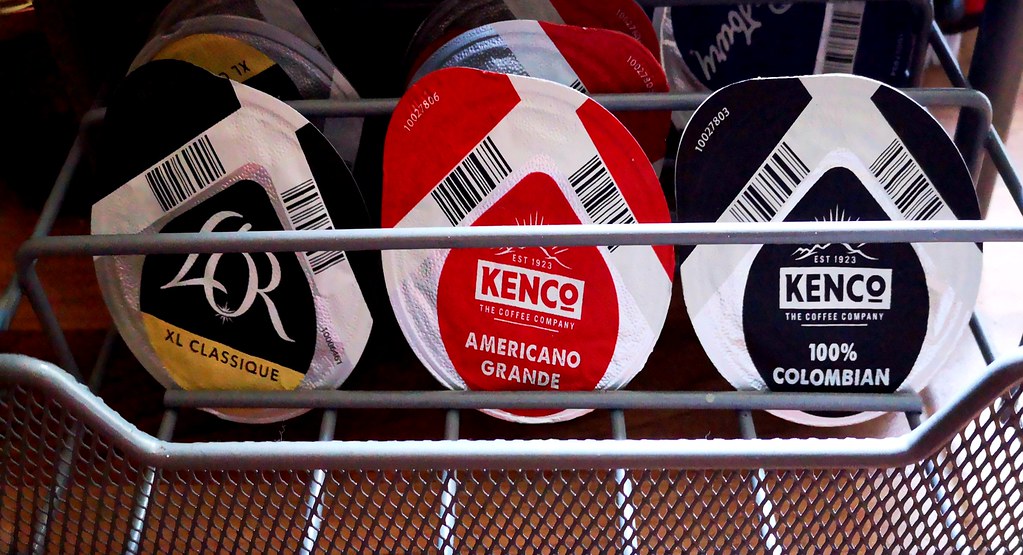
1. **The Sheer Volume of Waste: Over 7 Billion Capsules Annually**
Let’s kick things off with a statistic that’s as eye-opening as your first cup of joe: globally, over seven billion coffee capsules are consumed annually. Yes, you read that right – *seven billion*. And if that number isn’t jarring enough, consider this: approximately 39,000 capsules are produced every single minute. These figures aren’t just big numbers; they represent an immense, continuous wave of single-use waste flowing into our planet’s ecosystems, a truly staggering reality.
This monumental volume means managing the waste generated by these pods is a colossal challenge, one that traditional waste management systems often aren’t equipped to handle efficiently. The convenience factor that once made pods so appealing is now being overshadowed by their collective impact on landfills. This puts immense pressure on brands to either innovate their packaging or face the growing backlash from consumers who are increasingly aware of their environmental footprint.
This problem isn’t confined to a single region; it’s a global phenomenon that can be seen everywhere. For instance, in Spain, “70% of the young and adult population use coffee capsules on a daily basis, consuming about 40,000 tons of coffee per year.” This local snapshot perfectly illustrates the worldwide issue, demonstrating how deeply ingrained coffee capsule use has become in modern daily life.
This widespread adoption, while a success for coffee pod sales, simultaneously amplifies the environmental crisis they contribute to. It makes it imperative for brands to confront this reality head-on, seeking sustainable solutions beyond merely providing a convenient daily ritual. The sheer quantity of discarded pods is undeniable, demanding immediate and impactful responses from the industry.

2. **Keurig Dr Pepper’s Fossil Fuel Dilemma: The Struggle of Difficult-to-Recycle Plastics**
When we talk about coffee pod waste, not all pods are created equal, and some brands, unfortunately, bear a heavier burden of environmental criticism due to their material choices. Keurig Dr Pepper, a prominent player in the single-serve market, finds itself in a tough spot here. The company “uses plastic derived from fossil fuels to produce their pods,” a material choice that immediately raises red flags for environmentally conscious consumers and activists alike, contributing directly to resource depletion.
What makes this particularly challenging for Keurig Dr Pepper – and for the environment – is that these fossil fuel-derived plastic pods are “difficult to recycle.” This isn’t just an inconvenience; it means that a significant portion of these pods, even if consumers attempt to recycle them, often ends up in landfills. The complex, mixed-material construction of many such pods, combining plastic, aluminum, and coffee grounds, makes them particularly tricky for standard recycling facilities to process effectively.
This inherent design flaw creates a massive disconnect between the desire for sustainability and the practical reality of disposal. It places Keurig Dr Pepper under considerable environmental pressure, as consumers become more educated about plastic waste and its long-term effects. The company is in a position where it must “continue to innovate and invest in more effective recycling solutions” or risk alienating a growing segment of the market that prioritizes eco-friendly alternatives.
The difficulty in recycling these pods not only contributes to landfill waste but also tarnishes the brand’s image in an era where sustainability is becoming a key differentiator for purchasing decisions. Addressing this material choice and recyclability issue is crucial for brands hoping to maintain relevance and appeal in an increasingly green-minded marketplace.

3. **Nespresso’s Recycling Headaches: Even with Investment, Effectiveness Is Tough**
It’s not just the traditional plastic pod manufacturers facing a struggle; even brands that have made significant commitments to recycling are discovering the immense complexities involved. Nespresso, for instance, has been lauded for its efforts, having “invested over $35 million annually in a coffee pod recycling program.” This sounds like a substantial commitment, and on paper, it represents a brand taking responsibility for its product’s end-of-life cycle.
However, the reality of effective recycling is often far more challenging than the investment alone suggests. Despite this considerable financial outlay and a dedicated program, Nespresso’s efforts are hampered by a crucial hurdle: consumer participation and logistical realities. The context reveals a sobering statistic: “only 36-37% of their pods are actually recycled nationwide.” This means that even with a multi-million dollar program in place, the vast majority of Nespresso pods are still likely heading to landfills.
The responsibility often falls squarely on consumers to “actively participat[e] by either mailing back pods or finding specific drop-off locations,” which can be highly inconvenient. This extra effort acts as a significant deterrent, lowering participation rates and undermining the program’s overall effectiveness, highlighting a critical flaw in the recycling loop.
This situation underscores a fundamental struggle for even the most environmentally proactive brands: building a truly circular economy for single-use products is incredibly difficult to scale. For Nespresso, the challenge is not just to invest more, but to find ways to make recycling so seamless and ubiquitous that the participation rate skyrockets. Until then, despite their significant efforts, the brand continues to face scrutiny over the actual environmental impact of their products.

4. **The Greenhouse Gas Footprint Beyond the Pod: Emphasizing Cultivation and Disposal Emissions**
When we talk about the environmental impact of coffee pods, it’s easy to focus solely on the discarded capsule itself, picturing piles of plastic. However, the true “greenhouse gas emissions from coffee production” are a much broader story, one that encompasses the entire lifecycle of our beloved brew. The context points out that “the primary contributor to the environmental impact of coffee may not be the pods themselves, but rather the coffee bean cultivation and production process.” This crucial insight shifts the focus beyond just the physical waste and into the unseen ecological costs of what’s inside the pod.
A recent study provides compelling evidence for this broader impact, challenging our initial assumptions. It states that “producing 11g of Arabica coffee in Brazil – the amount that can be saved by using a coffee pod – emits about 59g of CO2 equivalent.” To put that into perspective, this is “about twice as much as the 27g of CO2 equivalent emitted by creating and disposing of those same pods.” This revelation complicates the narrative, suggesting that while pod waste is a critical issue, the agricultural practices and processing methods of the coffee itself contribute even more significantly to the overall carbon footprint.
This presents a multifaceted challenge for coffee pod brands, extending far beyond simply changing pod materials. It’s not enough to simply create a compostable pod if the coffee inside was produced using environmentally intensive methods. Brands must grapple with the entire supply chain, from ensuring sustainable cultivation practices like “shade-grown coffee” that “helps preserve biodiversity,” to choosing “low-emission coffee processing methods” that minimize water and energy usage.
The struggle here is holistic: addressing both the capsule and its contents, as consumers increasingly seek brands that offer comprehensive sustainability from bean to cup. This means that true environmental accountability for coffee pod brands demands a deep dive into every stage of production, not just the final product’s packaging.
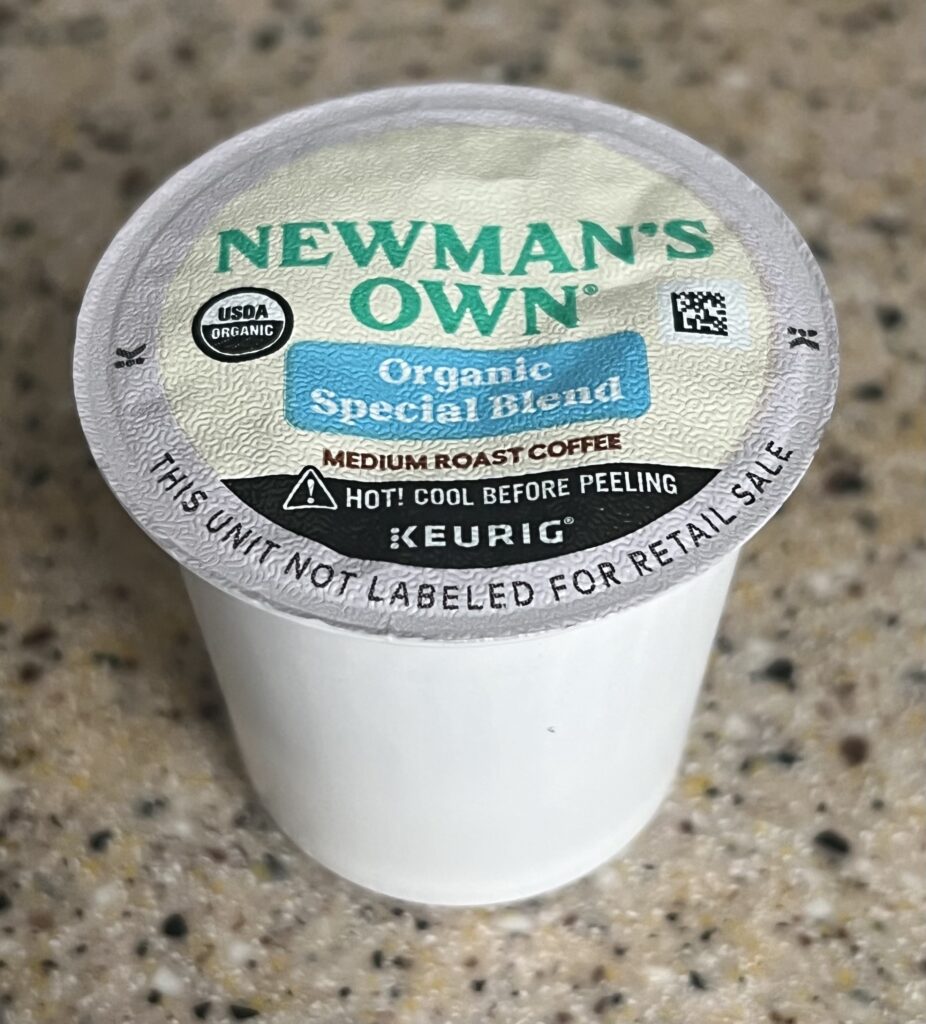
5. **Debunking the “Eco-Friendly” Myth: The Complex Reality of Pod Sustainability Claims**
As coffee pod sales have “skyrocketed over the years, with sales of pod machines in the US soaring from 1.8 million units in 2008 to 20.7 million in 2018,” so too have the claims of their environmental friendliness. Many coffee pod companies have been quick to tout their products as eco-friendly alternatives, but recent studies and findings suggest that the reality is “more complex.” This creates a significant challenge for brands in maintaining consumer trust, especially as environmental awareness grows and people become more skeptical of greenwashing.
One surprising finding challenges conventional wisdom regarding brewing methods. “A recent analysis by researchers at the University of Quebec at Chicoutimi found that in certain cases, a traditional filter coffee machine can produce 1.5 times as many greenhouse gas emissions as a coffee pod.” This counter-intuitive result is attributed to the precise measurement of ingredients by coffee pods, where “many coffee drinkers use 20% more coffee and twice as much water than necessary when brewing with a filter,” leading to inefficiency.
However, this finding doesn’t give traditional pods a free pass. The context immediately counters this by noting that “this finding contradicts previous research that has shown coffee pods can produce significantly more greenhouse gas emissions than other brewing methods, such as a Moka pot.” The conflicting research highlights the nuanced and often confusing landscape of “environmental impact comparison between different coffee brewing methods.”
For brands, this means that simple “eco-friendly” labels are no longer sufficient; they must engage in greater transparency and provide comprehensive data, or risk alienating consumers who are “more conscious of their environmental footprint.” The struggle lies in navigating these complexities and presenting an honest, scientifically backed case for their sustainability efforts, rather than relying on broad, potentially misleading claims.
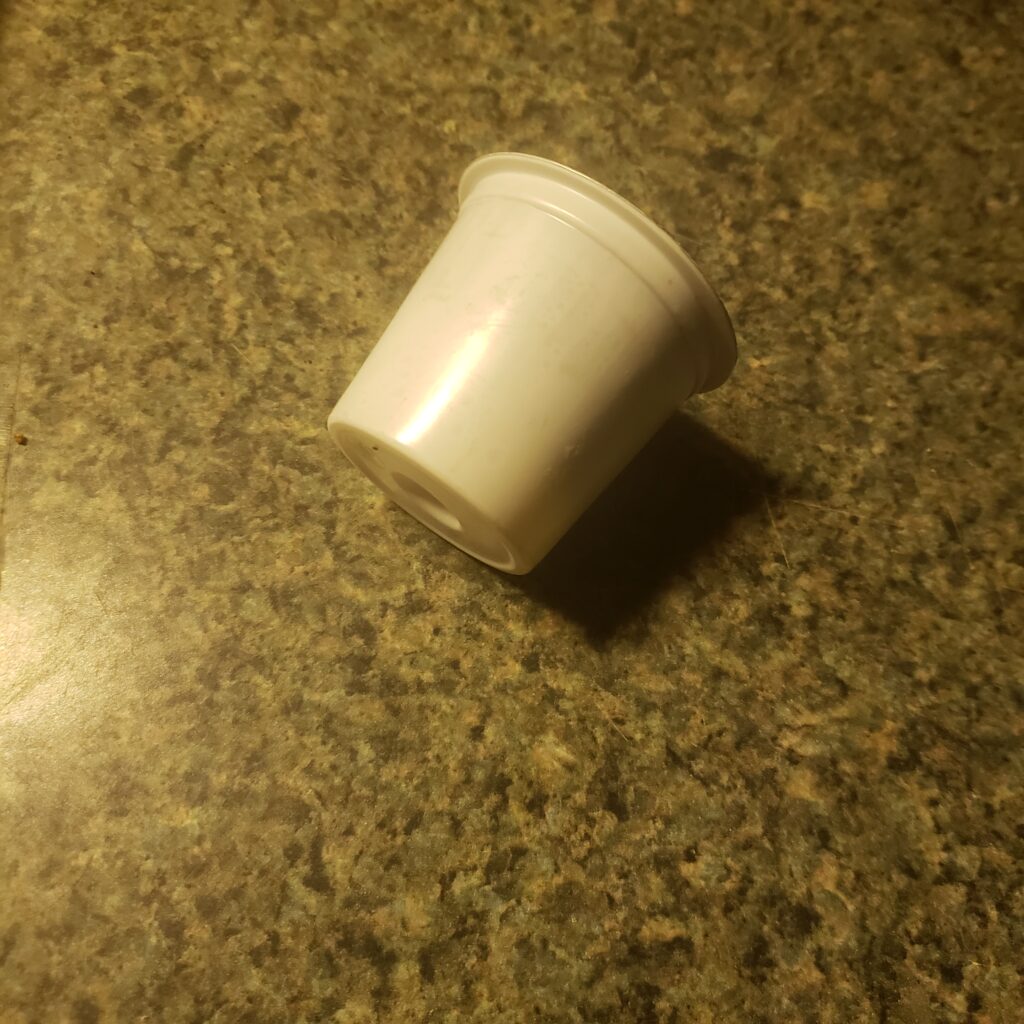
6. **Spain’s Daily Pod Habit: A Microcosm of Global Consumption and Waste**
To truly grasp the magnitude of the environmental pressure on coffee pod brands, sometimes it helps to zoom in on specific regional examples that reflect a broader global pattern. Spain provides a stark illustration of just how deeply embedded coffee capsule consumption has become in daily life. In this country, “70% of the young and adult population use coffee capsules on a daily basis, consuming about 40,000 tons of coffee per year.” This isn’t just a fun fact; it’s a powerful indicator of widespread adoption that leads directly to significant waste generation.
This high daily usage rate translates into an enormous amount of discarded material, creating a clear environmental burden. The context emphasizes that “the waste generated from coffee pods, particularly those made of non-recyclable materials, remains a significant concern.” When a population segment as large as Spain’s young and adult demographic is consistently using these capsules, the cumulative effect on landfills is staggering and undeniable.
This scenario places immense pressure on brands operating in such markets to not only provide viable, scalable solutions for post-consumption waste but also to rethink their core product offerings. The “Key Statistics Data” highlights this even further: of the “Over 7 billion” capsules consumed annually worldwide, “Approximately 70% of these coffee capsules end up in landfills.” Spain’s intense daily habit is a significant contributor to this global landfill crisis, showcasing the scale of the problem.
For coffee pod brands, addressing the Spanish market’s unique consumption patterns means not only offering sustainable options but also educating a deeply entrenched user base on new disposal methods or encouraging a complete shift in brewing habits. It’s a clear signal that the status quo is simply not sustainable, demanding innovative and impactful changes from the industry.

7. **The Plastic Lifespan Problem: Up to 500 Years to Decompose**
One of the most concerning aspects of traditional coffee pods, and a major source of environmental pressure for brands, is the sheer longevity of the materials they’re made from. Many standard coffee pods utilize plastics that are notoriously difficult to break down naturally. The context starkly reminds us that “the plastic used in many coffee pods can take up to 500 years to decompose.” Imagine that: a single-use item, designed for a momentary pleasure, lingering in our environment for half a millennium. This extended lifespan poses an existential threat to our planet’s ecosystems.
This immense decomposition time directly “further contribut[es] to the issue of single-use plastic waste,” a global crisis that grows with every discarded pod. Every pod that isn’t properly recycled or composted becomes a long-term pollutant, breaking down slowly into insidious microplastics that infiltrate soil, water, and even the food chain. This isn’t just an aesthetic problem; it’s a profound ecological crisis that coffee pod manufacturers are increasingly being held accountable for by conscious consumers and environmental groups.
The carbon footprint associated with this entire “lifecycle of a single-use coffee pod” further amplifies the problem, resulting in “about 60 grams of CO2 per cup.” This figure is “significantly higher than the carbon footprint of using a reusable coffee pod,” presenting a damning comparison. Brands relying on these long-lasting, high-carbon footprint plastics are under immense pressure to justify their product design and rapidly transition to more sustainable alternatives.
The stark contrast with reusable options underscores the urgent need for innovation in material science and a complete re-evaluation of how coffee pods are manufactured and consumed. This pushes brands toward truly sustainable and circular solutions, moving away from a disposable model that leaves such a devastating, lasting legacy on the planet.
Alright, so we’ve poured over the mountain of environmental issues brewing with traditional coffee pods. It’s clear that the convenience we’ve all come to love has a serious carbon footprint and waste problem. But here’s the exciting part: the coffee industry isn’t just sitting there idly stirring! A whole new wave of innovative solutions and sustainable shifts is bubbling up, driven by pioneering brands, smart reusable systems, and, most importantly, us—the increasingly eco-conscious commuters saying ‘Back to the Mug!’ It’s time to explore how the industry is waking up and responding to these environmental demands, proving that our daily brew can be both delicious and planet-friendly.

8. **The Rise of Compostable and Biodegradable Capsules: A Greener Glimpse**
If the thought of your coffee pod lingering for centuries gives you the jitters, then get ready for some good news! The coffee market is seeing a promising shift towards compostable and biodegradable coffee capsules. These aren’t just buzzwords; they represent a significant step towards a more sustainable morning routine, offering a genuinely more eco-friendly alternative to the traditional plastic and aluminum pods that have dominated our kitchens for so long.
The real game-changer here is that specific compostable coffee pods and biodegradable coffee capsules are designed to be 100% compostable, often breaking down completely within just two to three months. This is a massive leap from the hundreds of years typical plastic pods take to decompose! Over the last decade, we’ve seen more and more companies jumping on board, manufacturing these innovative options, which are widely considered to be the sustainable way forward for coffee consumption.
Take, for example, the World Wide Fund for Nature (WWF), which is actively selling 100% compostable coffee pods, putting their stamp of approval on this greener solution. And for a truly futuristic twist, some companies, like Migros in Switzerland, have launched “coffee balls” that come coated in a seaweed-based covering that’s not only fully compostable but also a fascinating example of natural innovation. These eco-friendly brewing solutions are all about reducing waste and actively promoting a zero-waste coffee experience, letting us enjoy our daily cup without the guilt.
Comparing these options to their traditional counterparts really highlights the difference. While traditional pods can take hundreds of years to break down and have limited recyclability, compostable/biodegradable capsules decompose in just a few months and are 100% compostable. This translates to significantly reduced plastic pollution and fewer greenhouse gas emissions, pushing us towards a much higher level of sustainability in our daily coffee ritual.

9. **A Deeper Dive into Compostable Pods: Separating Hype from Reality**
While the promise of compostable pods sounds like the perfect solution, it’s crucial to understand that not all “eco-friendly” claims are created equal. The terms biodegradable and compostable are often used interchangeably, but they actually denote distinct processes and requirements that are important for us, the consumers, to grasp. Biodegradable materials are designed to break down naturally over time, but the catch is that the timeframe and specific conditions for this breakdown can vary wildly. Some might only degrade in specialized industrial composting facilities, not your backyard compost bin, and some might even release tiny microplastics as they slowly break down.
Compostable pods, on the other hand, are specifically engineered to transform into nutrient-rich compost under particular conditions, usually within a controlled composting environment. This is where certifications like BPI in North America and TÜV in Europe come into play, offering a level of assurance. However, it’s still super important to verify the specific certification and its requirements, because, let’s be real, not all compostable pods perform identically, and many still need industrial facilities to properly break down. If these so-called biodegradable pods end up in landfills, they can decompose anaerobically, meaning without oxygen, which unfortunately releases methane – a potent greenhouse gas that undermines their supposed environmental benefits.
Brands like San Francisco Bay and Kauai Coffee are leading the charge, offering compostable coffee pods often made from plant-based bioplastics or paper, which are generally more sustainable than plastics derived from fossil fuels. But here’s another layer to consider: the sourcing of these materials matters just as much. If the plant-based materials come from agricultural practices that aren’t sustainable, the overall environmental gain shrinks. Plus, the infrastructure for composting these pods isn’t universal. Many municipalities simply don’t have the necessary industrial composting facilities, which means even certified compostable pods can, sadly, end up in landfills, defeating their whole purpose.
This highlights a huge need for consumer awareness. We need to check with our local waste management providers to understand what composting options are actually available in our areas. The reality is that simply slapping a “compostable” label on something isn’t a magic fix; the true effectiveness of these pods relies heavily on how they’re managed at the end of their life. It also means we need to consider the energy and resources that go into producing and transporting these pods. A full lifecycle assessment (LCA) is essential to truly understand their environmental impact from start to finish.

10. **The Reusable Revolution: Embracing Refillable Pod Systems for a Zero-Waste Brew**
If you’re looking to truly double down on sustainability and cut down on waste, then reusable pod systems are where it’s at! These systems offer a genuinely compelling pathway towards sustainable coffee consumption, fitting perfectly with eco-friendly living principles. By ditching single-use pods, we, as consumers, can actively reduce waste and dramatically minimize our environmental footprint – which is, let’s face it, a core tenet of living a more sustainable life.
These smart systems empower us coffee lovers to enjoy our daily ritual while embracing a much more responsible approach to resource consumption. Leading brands like Nespresso and WayCap are at the forefront, offering refillable capsules that are compatible with popular single-serve machines, perfectly bridging that gap between undeniable convenience and crucial eco-consciousness. This innovative approach drastically reduces our reliance on single-use plastics, which are notorious contributors to landfill waste and environmental pollution.
But wait, there’s more good news! Reusable pods also open up a whole new world of coffee exploration, empowering us to delve into a wider range of coffee roasts and grinds, ultimately enhancing the overall coffee experience. While making the switch to a refillable system does involve an initial investment in those reusable capsules, the long-term cost savings are seriously substantial. Think about it: eliminating the recurring expense of buying disposable pods translates into significant financial benefits over time, making sustainable coffee consumption an economically savvy choice too!
Real users often rave about the ease of use and convenience of these systems, quickly dispelling any concerns about added complexity. Many report a super seamless transition to refillable pods, barely noticing any impact on their daily coffee routine. However, it’s worth noting the nuances of different refillable systems. Some, like Nespresso’s, are designed specifically for their machines, while others, like WayCap, offer broader compatibility. This compatibility factor is key, as we all want solutions that fit seamlessly with our existing equipment. Plus, the ease of filling and cleaning varies, with some preferring simple pre-filled capsules and others loving the flexibility of grinding their own beans.
Beyond the immediate perks of reduced waste and saving some cash, reusable pod systems are a huge part of a broader shift towards zero-waste coffee practices. By embracing reusable solutions, we’re all actively participating in a movement towards a circular economy, where resources are conserved and waste is minimized. This aligns perfectly with the growing demand for eco-friendly alternatives across pretty much all consumer goods, reflecting a heightened awareness of environmental responsibility. Ultimately, adopting reusable coffee pods is a tangible step towards sustainable living, empowering us coffee enthusiasts to make a positive impact on the planet, one delicious cup at a time.
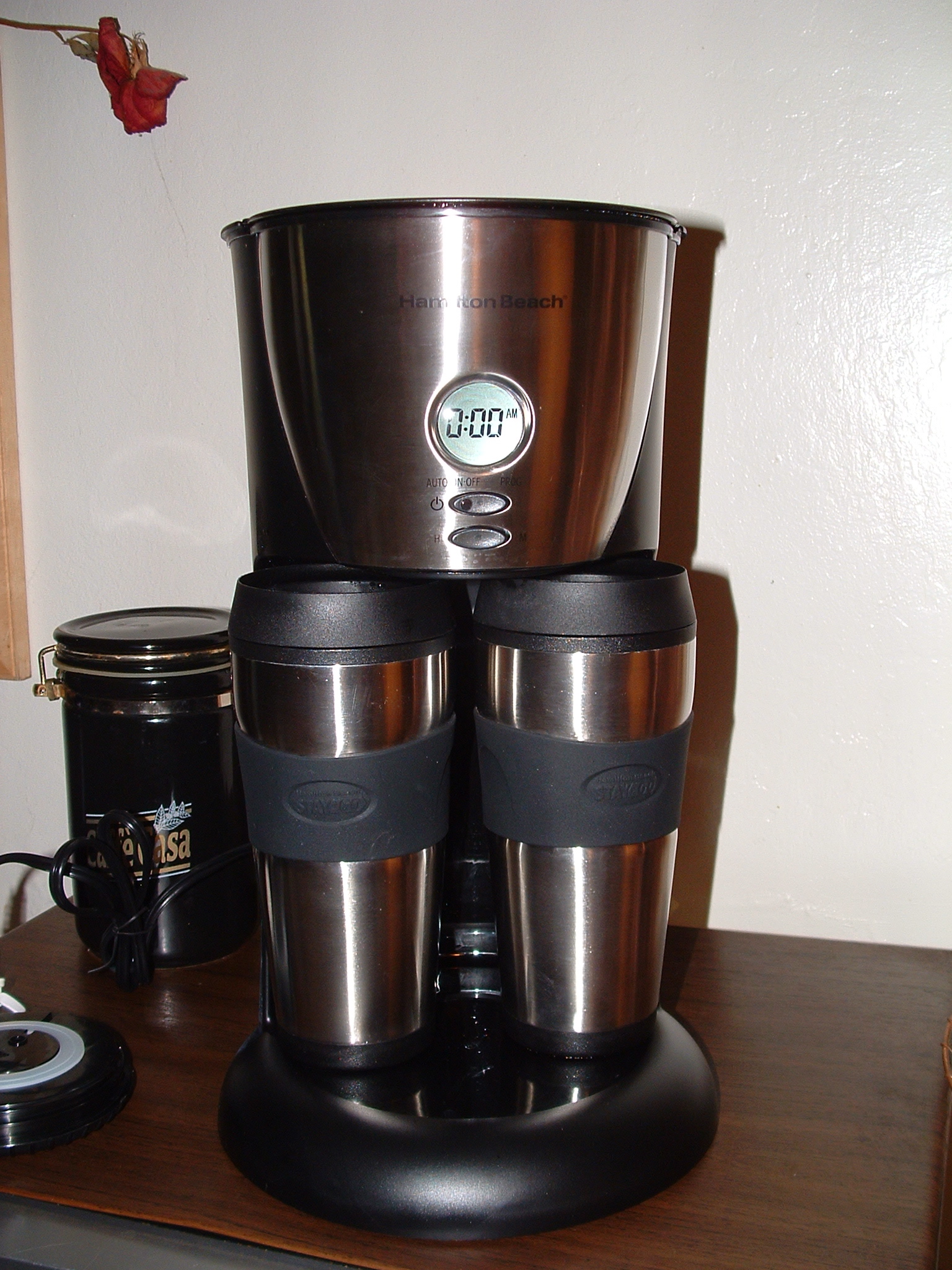
11. **Closing the Loop: The Complex Reality of Coffee Pod Recycling Programs**
While the efforts of recycling programs for coffee pods are definitely a step in the right direction, it’s important to acknowledge that their effectiveness and accessibility can vary significantly, still posing challenges for truly sustainable coffee brewing. Brands like Nespresso, with their aluminum pod recycling program, and Keurig, with initiatives for their mixed-material pods, have indeed made efforts to collect used pods. However, these programs often place a hefty burden on consumers, relying on us to actively participate by either mailing back pods or finding specific, sometimes inconvenient, drop-off locations.
The complexity doesn’t stop there. Separating the coffee grounds from the pod material, especially in those tricky mixed-material pods, further complicates the recycling process. This often leads to a lower percentage of the actual material being recycled compared to what’s collected. It highlights a critical gap: the intent of these recycling programs versus their practical impact on reducing landfill waste. The reality is that our current recycling infrastructure isn’t universally equipped to handle the specific, often multi-layered materials found in many coffee pods. This often means that, despite our best efforts, a significant portion still ends up in landfills.
The lack of standardized recycling processes across different regions and municipalities only adds to the confusion, making it really hard for consumers to know if their recycling efforts are truly making a difference. Many local waste facilities simply don’t have the specialized equipment needed to process these materials, resulting in pods being diverted to general waste streams. This underscores the crucial point that we need to look beyond recycling as the sole primary solution and proactively explore more sustainable alternatives like compostable or, even better, refillable coffee pods.
We also need to consider the environmental footprint involved in the transportation and processing of these used pods for recycling. That whole logistical chain contributes to the overall environmental impact, which is something to factor in when we evaluate the true sustainability of these programs. Environmental scientists often point out that the focus really should shift towards reducing waste at the source rather than relying solely on end-of-life solutions like recycling. This perspective stresses the need for manufacturers to prioritize the design of genuinely eco-friendly coffee pods—pods that are either truly compostable or designed for long-term reuse.
The effectiveness of coffee pod recycling programs is also often hampered by surprisingly low consumer participation rates. This can be due to a lack of awareness about specific recycling options or simply the inconvenience of the process. Brands absolutely need to invest in more accessible and user-friendly recycling programs, and just as importantly, they need to educate consumers about the vital role their participation plays in creating a circular economy for coffee pods. A more holistic approach to sustainable coffee brewing has to consider the entire lifecycle of a coffee pod, from production to disposal, prioritizing solutions that minimize waste and environmental impact at every single stage. The ultimate goal is to move towards a zero-waste coffee consumption model, where pods are designed with sustainability at their core, and consumers are empowered to make truly environmentally conscious choices.
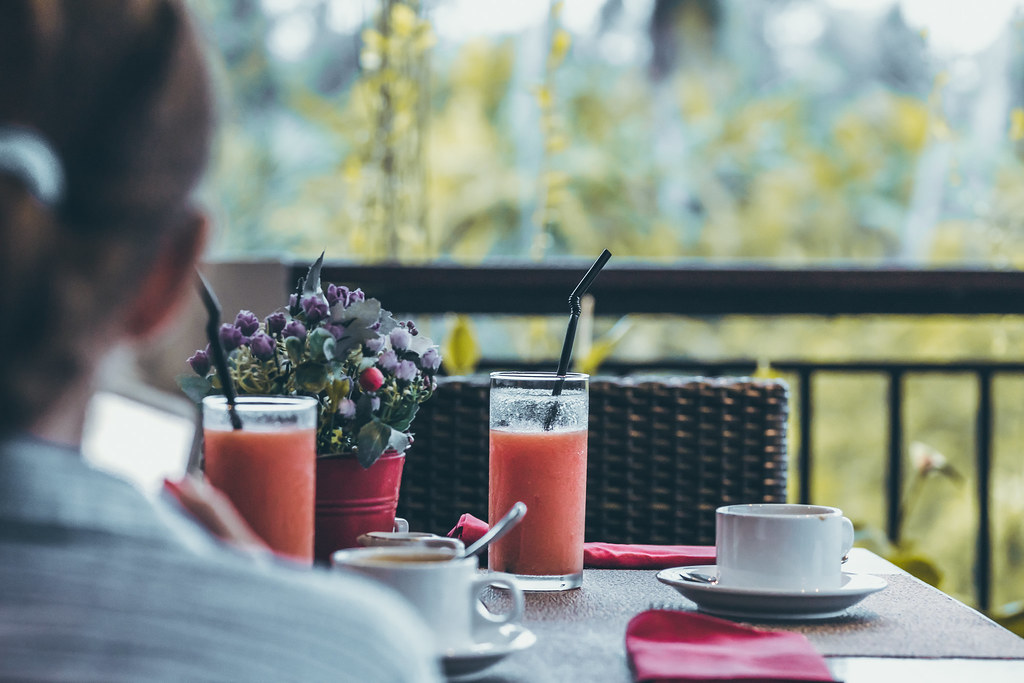
12. **Brewing for a Greener Tomorrow: Simple Steps to Reduce Your Coffee’s Carbon Footprint**
Beyond just choosing sustainable pods, there are so many impactful ways we can individually brew for a greener tomorrow and seriously reduce our coffee’s overall carbon footprint. It turns out that even simple adjustments to our daily coffee habits can make a significant difference! It’s not just about the capsule; it’s about the whole journey of your coffee.
One of the most impactful steps you can take is to choose truly sustainable coffee options from the get-go. Look for beans that are “fair trade and organic certified,” as these labels often ensure that the production process is environmentally friendly and also supports coffee farmers ethically. Consider opting for “shade-grown coffee,” which is cultivated under the canopy of trees. This practice isn’t just great for the environment, it “helps preserve biodiversity and reduces the need for water and fertilizers.” It’s like getting a bonus eco-boost with your morning cup!
Furthermore, delve into the processing methods of your coffee. “Opt for low-emission coffee processing methods that minimize water and energy usage,” which not only enhances the flavor but also significantly reduces the environmental impact of your coffee. And don’t forget about packaging! Buying coffee in bulk is a fantastic way to cut down on packaging waste, and always make sure to reuse or recycle your coffee containers whenever possible. Every little bit counts.
Perhaps one of the easiest and most effective changes you can make is to “invest in a reusable coffee cup.” This simple swap helps you avoid contributing to the billions of disposable cups that, unfortunately, end up in landfills each and every year. By making these small, conscious choices in our coffee consumption, we can collectively and significantly reduce the carbon footprint of our daily ritual. Remember, as the experts note, “the goal of our research was not to encourage people to use pods or stop drinking coffee, but rather to focus on the major problems with coffee consumption at the consumer level.”
It’s truly inspiring to realize that while individual actions are incredibly important, the real impact lies in our collective efforts to address the wider, systemic issues surrounding the entire coffee industry. By staying informed and making mindful choices, we can all be a crucial part of the solution, contributing to a much more sustainable future for our beloved coffee – one conscious cup at a time.
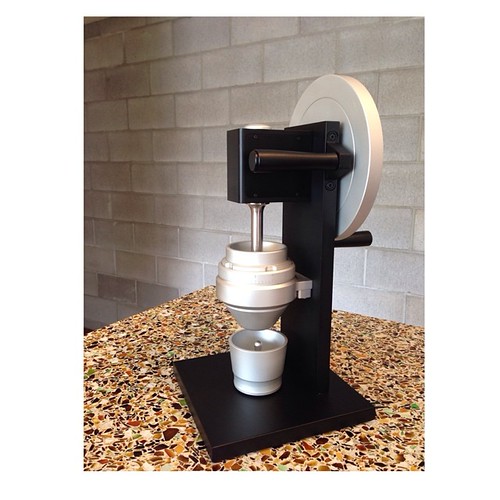
13. **Consumer Trends Driving the Sustainable Shift: From Value to Gen Z’s Influence**
Beyond the innovations from brands, a massive force driving the shift towards sustainable coffee is, well, us! Consumer trends continue to dramatically impact the coffee market, shaping everything from product development to sustainability initiatives. Right now, it’s a fascinating mix of conflicting desires, as we navigate uncertain economic times. “Squeezed budgets will see consumers save by buying more private-label coffee,” Mintel’s report tells us, noting that “19% of consumers say they are purchasing less expensive coffee to save money,” with private-label options outperforming the market average.
But here’s the twist: “demand for premium at-home coffee experiences remains high among many consumers.” Circana’s Sally Lyons Wyatt pinpointed “premium offerings” as “driving growth for coffee, gaining 3.1 percentage points of share from 2018-2022.” This means while some of us are tightening our belts, others are treating themselves to “coffee shop tastes but at a fraction of the price” right in their own kitchens, with “16% of consumers report creating more specialty coffee drinks at home and 16% report treating themselves to more expensive coffee more often.”
Perhaps the “biggest” trend impacting the coffee market, as Lyons Wyatt notes, is the soaring influence of Gen Z. These younger consumers are shaking things up, not typically consuming as much traditional hot coffee as older generations. Instead, they “tend to gravitate more toward new experiences (cold brew) and also prefer flavor experiences to traditional unflavored coffee varieties.” This segment is causing manufacturers to completely rethink how to drive engagement and innovate around flavors and attributes that truly appeal to this vibrant, youthful demographic.
Social media is also playing a huge role here. “Either influencers and/or social causes have spurred growth in segments with the coffee category,” Lyons Wyatt observed. This means brands aren’t just selling coffee; they’re selling values and experiences that resonate online. As many consumers continue to cope with rising prices – often “cutting back on foodservice coffee expenditures and instead enjoying coffee at home” – brands are innovating at lightning speed, focusing on desirable attributes like sustainability, convenience, and unique brewing processes. It’s a dynamic dance between what we want and what the planet needs, and our choices are truly steering the ship.
Read more about: The New ‘V-Word’: Why Vintage and Thrift Are the Hottest Trends for Gen Z, Redefining Style, Sustainability, and Self-Expression

14. **The Innovation Frontier: Taste, Quality, and the Future of Eco-Friendly Coffee**
For many coffee lovers, the ultimate question when considering sustainable options boils down to one thing: how does the coffee actually *taste*? After all, convenience and eco-friendliness are great, but a subpar brew is a deal-breaker. Our quest for a greener cup means scrutinizing performance, and what we found through blind taste tests comparing various sustainable coffee pod solutions against traditional ones is truly insightful: the performance of eco-friendly alternatives is not uniform, and the quality of the brew can be significantly impacted by both the pod material and the coffee itself.
For example, some biodegradable pods, particularly those crafted from plant-based materials, did exhibit a slightly muted flavor profile when compared to their plastic counterparts. This can sometimes be attributed to the material’s interaction with the hot water, potentially leaching subtle off-notes or just failing to fully extract the coffee’s complex flavors and rich aromas. This isn’t a universal truth, however; many brands are rapidly advancing, demonstrating that choosing eco-friendly options absolutely does not mean compromising on the quality of your coffee experience.
Beyond just the pod, the entire industry is buzzing with innovation. We’re seeing exciting developments in “emerging categories” such as “cold brew, flavored and RTD (ready-to-drink) coffee” which are driving significant growth, especially among younger households entering the category through these non-traditional segments. NESCAFÉ, for instance, recently expanded its U.S. portfolio with NESCAFÉ Gold Espresso and NESCAFÉ Ice Roast, directly responding to the demand for diverse, convenient, and flavorful options.
Circana’s Lyons Wyatt noted that “these segments are delivering growth disproportionate to their size and are gaining share,” because they offer the “convenience, various types and tastes that consumers want today.” The future of coffee, then, is not just about making pods greener, but also about expanding horizons. We’ll continue to see “social media” playing a huge factor, alongside “licensing and category extensions,” all working to refresh and reframe offerings for incremental growth. The exciting news is that many sustainable coffee solutions also offer improved coffee quality, often utilizing premium beans and advanced brewing techniques, proving that a healthier planet and a delicious cup can, and should, go hand-in-hand.
The journey towards a truly sustainable coffee culture is a dynamic, ongoing conversation, brimming with both challenges and groundbreaking innovations. From the intricate science behind compostable pods to the simple yet profound act of choosing a reusable mug, every step we take collectively reshapes the landscape of our daily brew. As conscious commuters and passionate coffee lovers, our choices wield immense power, steering brands towards greater accountability and pushing the entire industry towards a future where convenience and environmental responsibility are not just compatible, but intrinsically linked. Let’s keep brewing forward, making mindful decisions that celebrate both our love for coffee and our commitment to a healthier planet, one delicious, sustainable cup at a time. The future of coffee is in our hands, and it looks (and tastes!) incredibly bright.


